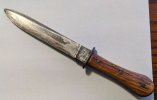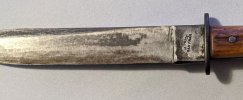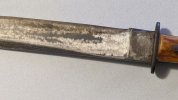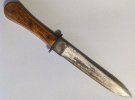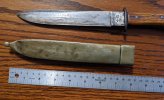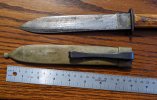mikey488
Gold Member
- Joined
- Jun 10, 2006
- Messages
- 228
I've inherited a potentially really nice knife, probably carried during WWII by a relative by marriage that is now deceased. I never knew he had this knife until after he had passed.
Now it belongs to me, and I would like advice as to whether I should restore the surfaces that are damaged by improper sharpening. So, looking for advice
on how much to do, or have done. This knife, for certain, has been in the family since at least the 1940's. It appears to be circa 1860-70's in my opinion, but I've never handled another
Michael Price / San Fran blade, only seen photos. It would be a beautiful knife if the surfaces were refinished, and it doesn't seem to me that it would be worth less that what is with
the damage done by the sharpening. Advice appreciated.
Now it belongs to me, and I would like advice as to whether I should restore the surfaces that are damaged by improper sharpening. So, looking for advice
on how much to do, or have done. This knife, for certain, has been in the family since at least the 1940's. It appears to be circa 1860-70's in my opinion, but I've never handled another
Michael Price / San Fran blade, only seen photos. It would be a beautiful knife if the surfaces were refinished, and it doesn't seem to me that it would be worth less that what is with
the damage done by the sharpening. Advice appreciated.
Attachments
Last edited:

